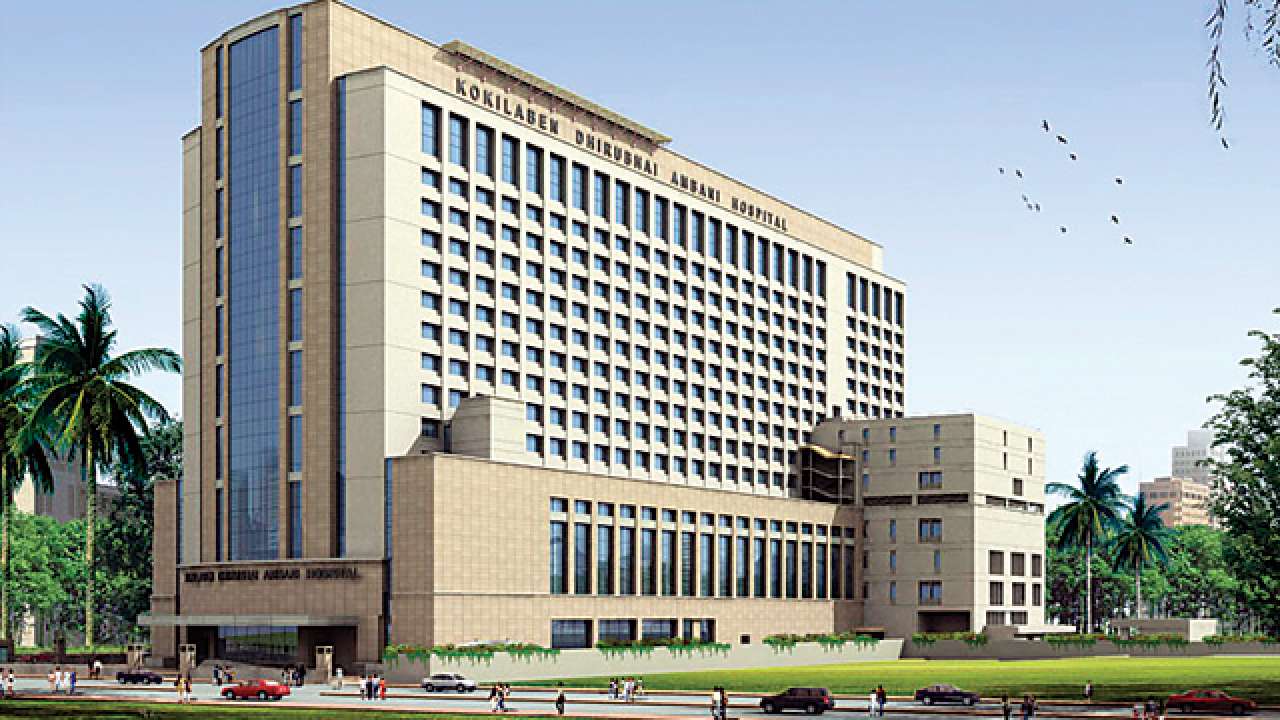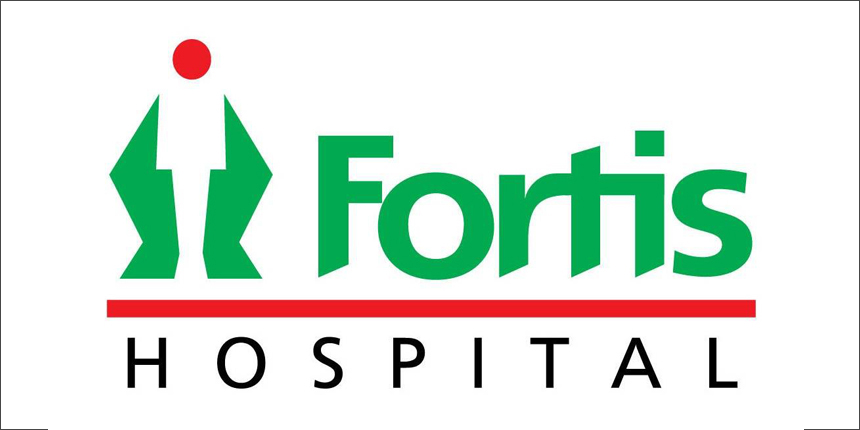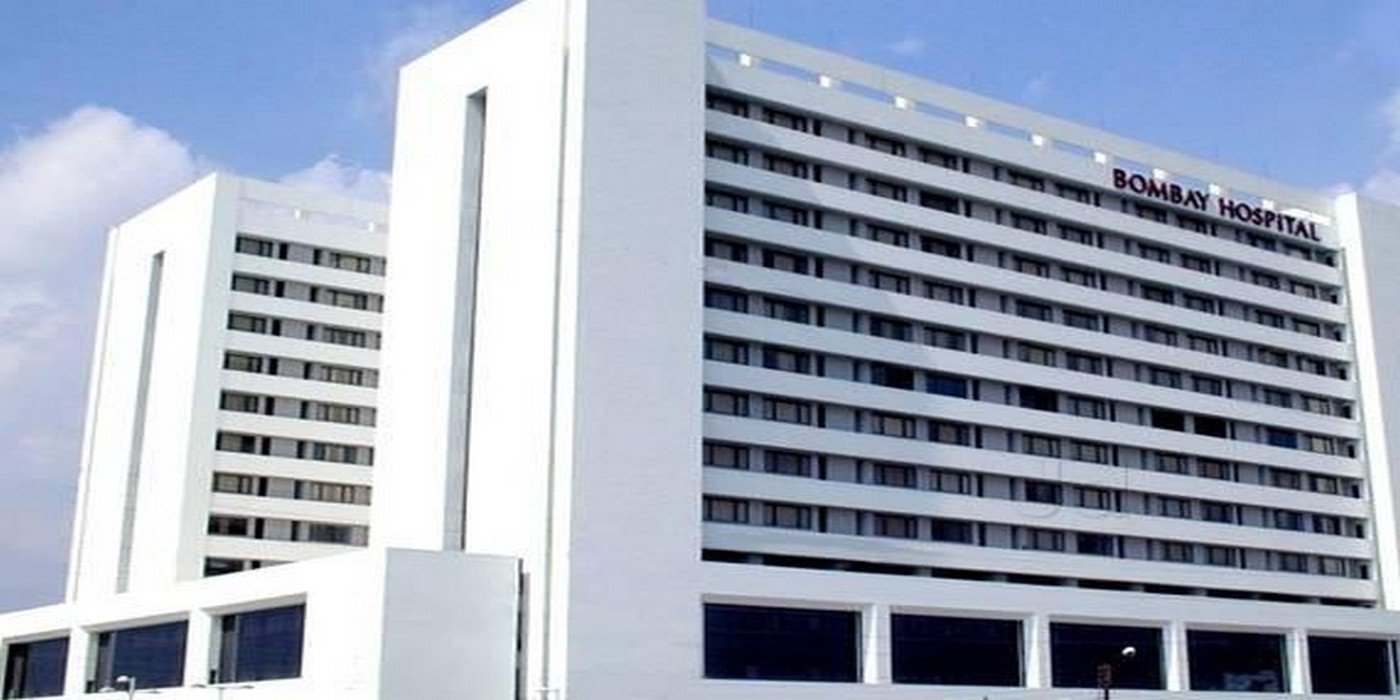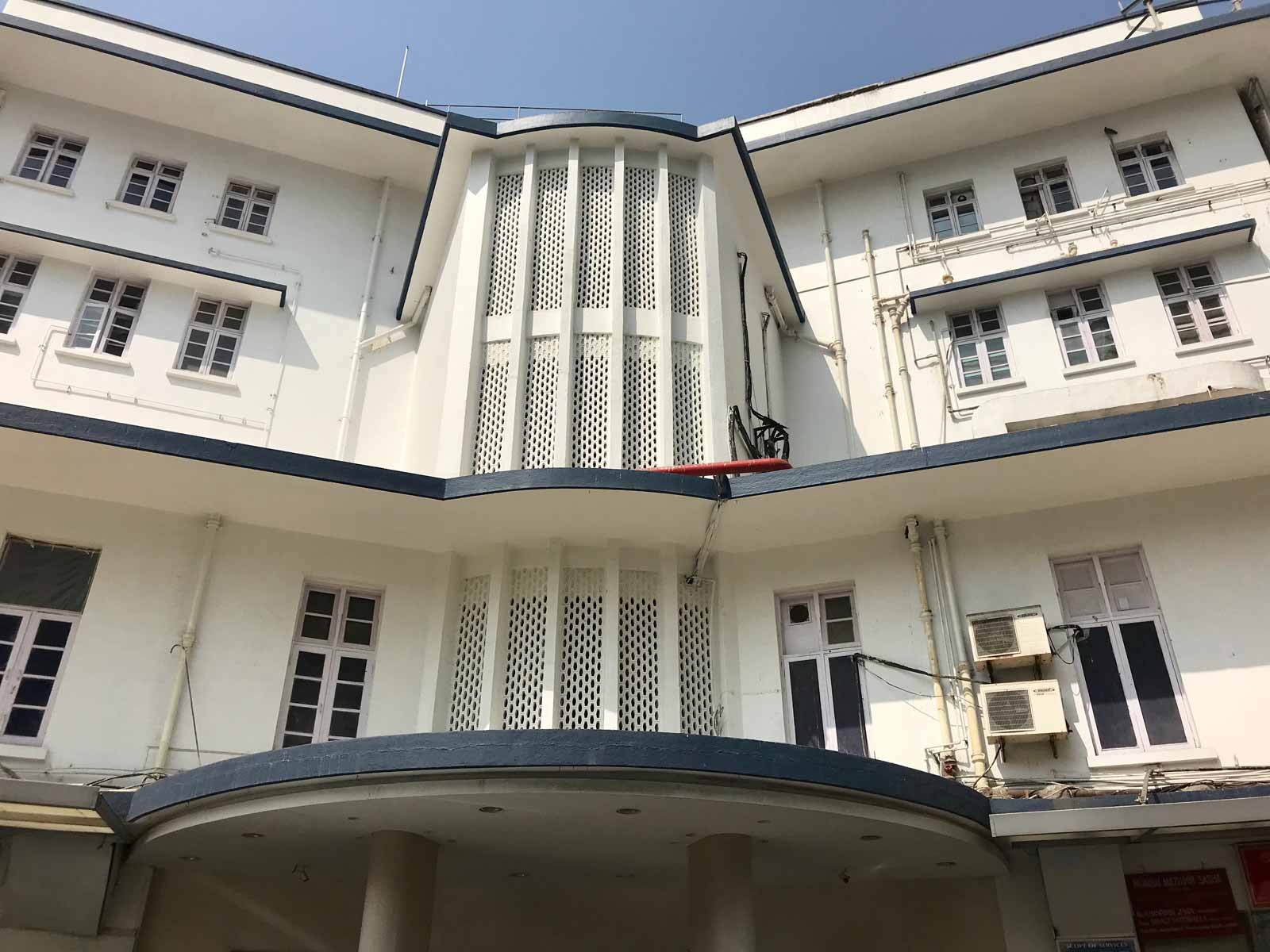Top 10 Best Hematology Hospitals in Mumbai in 2022.

Hospitals are medical facility that provides patient care using specialized health science, auxiliary healthcare professionals, and medical equipment. The most common type of hospital is the general hospital, which often contains an emergency room to address urgent health problems ranging from fire and accident victims to unexpected diseases.
A district hospital is usually the largest health care centre in its region, with many intensive care beds and additional beds for patients requiring long-term care. Trauma centres, rehabilitation hospitals, children’s hospitals, seniors’ (geriatric) hospitals, and institutions dealing with specific medical requirements such as mental care (see psychiatric hospital) and disease categories are specialized hospitals.
When compared to regular hospitals, specialized hospitals can help lower healthcare expenses. Depending on the sources of income, hospitals are categorized as general, speciality, or government.
A teaching hospital integrates patient care with instruction for health science and auxiliary healthcare students. A clinic is a health science facility that is smaller than a hospital. Hospitals have a variety of departments (for example, surgery and urgent care) as well as speciality units such as cardiology.
Some hospitals have outpatient departments, while others have chronic care units. A pharmacy, pathology, and radiology are examples of standard support units.
Hospitals are often supported by public funds, for-profit or nonprofit health organizations, health insurance companies, or charities, including direct philanthropic donations. Historically, religious groups or benevolent individuals and leaders frequently founded and sponsored hospitals.
Hospitals are now staffed mainly by professional physicians, surgeons, nurses, and allied health practitioners. However, in the past, this labour was typically handled by members of founding religious orders or volunteers. However, several Catholic religious orders, such as the Alexian’s and the Bon Secours Sisters, continue to focus on hospital ministry in the late 1990s, as do several other Christian faiths, such as the Methodists and Lutherans.
Hospitals were original “places of hospitality,” which is still kept in the names of several institutions, such as the Royal Hospital Chelsea, founded in 1681 as a retirement and nursing home for veteran soldiers.
Etymology
A white H on a blue backdrop is used to signify hospitals in the United States.
During the day, hospitals can be identified by a variety of emblems. In the United States, for example, a white ‘H’ on a blue background is commonly utilized. However, following the Geneva Conventions, a hospital may be marked with the red cross, red crescent, or red crystal during times of armed conflict.
Hospitals in the Middle Ages provided different services from current institutions, such as almshouses for the needy, pilgrim hostels, or hospital schools. The term “hospital” derives from the Latin hospes, which means “alien” or “foreigner,” and so “guest.” Another term derived from this was a hospital, which came to signify hospitality, or the relationship between a guest and a sheltered, as well as hospitality, friendliness, and hospitable greeting.
The Latin word then came to imply a guest-chamber, guest’s lodge, or an inn through metonymy. Thus, the source of the English words host (where the p was eliminated for ease of pronunciation), hospitality, hospice, hostel, and the hotel is Hospes.
The latter contemporary word stems from Latin via the Old French romance word hostel, which evolved into a silent s that was eventually eliminated from the word and is represented by a circumflex in the modern French word hôtel. Spital is a German term with similar roots.
Types
Some patients visit a hospital for diagnosis, treatment, or therapy and then leave (“outpatients”), whilst others are “admitted” and stay overnight or for several days, weeks, or months (“inpatients”).
Hospitals are separated from other types of medical facilities by their ability to admit and care for inpatients, whereas clinics are generally used to characterize smaller medical institutions.
Acute and general care
The term “general hospital” redirects here. General Hospital is an American soap opera.
The general hospital, often known as an acute-care hospital, is the most well-known form of the hospital. These hospitals treat a wide range of diseases and injuries.
Most have an emergency department (sometimes known as “accident & emergency”) or trauma centre to cope with life-threatening situations. Larger cities may have several hospitals of various sizes and facilities. In addition, some hospitals have ambulance services, particularly in the United States and Canada.
A district hospital is often the largest health care centre in its region, with intensive care, critical care, and long-term care beds.
In California, a “district hospital” is a type of healthcare facility established shortly after World War II to solve the scarcity of hospital beds in many local areas.
Even today, district hospitals remain the only public hospitals in 19 of California’s counties and the only locally accessible hospital in nine more counties where one or more other hospitals are located significantly from a local community.
District hospitals account for 28 of California’s rural hospitals and 20 critical-access hospitals. They are founded by local governments, have boards chosen by their constituents, and exist to meet local needs. They are a significant source of healthcare for uninsured and Medi-Cal patients (California’s Medicaid program serves low-income people, some seniors, people with disabilities, children in foster care, and pregnant women). In California, district hospitals supplied $54 million in uncompensated care in 2012.
Specialized
Starship Children’s Health is an Auckland, New Zealand-based children’s hospital.
A speciality hospital is dedicated solely to one or a few related medical specialities.
Rehabilitation hospitals, children’s hospitals, seniors’ (geriatric) hospitals, long-term acute care facilities, and hospitals for specific medical needs such as psychiatric problems (see psychiatric hospital), specific disease categories such as cardiac, oncology, or orthopaedic problems, and so on are all subtypes.
Fachkrankenhäuser are specialized hospitals in Germany; one example is Fachkrankenhaus Coswig (thoracic surgery). In India, speciality hospitals are known as super-speciality hospitals, as opposed to multispecialty hospitals, which include several specialities.
When compared to regular hospitals, specialized hospitals can help lower healthcare expenses. For example, Narayana Health’s cardiac centre in Bangalore specializes in cardiac surgery and can accommodate a substantially more significant number of patients. It has 3,000 beds and performs 3,000 paediatric cardiac surgeries every year, the most of any facility in the world.
Because surgeons are paid on a fixed salary rather than per treatment, the hospital can take advantage of economies of scale and reduce its cost per procedure as the number of procedures increases. Working on a single procedure, such as a production line, can help each specialize become more efficient.
With 1,547 beds, Jackson Memorial Hospital in Miami’s Health District serves as the primary teaching hospital for the University of Miami’s Leonard M. Miller School of Medicine. It is the largest hospital in the United States.
In Hamilton, Ontario, McMaster University Medical Centre is a teaching hospital.
A teaching hospital provides care to patients while also training future medical professionals such as medical students and student nurses. It could be affiliated with a medical school or a nursing school and be active in medical research. In addition, students may witness clinical activity in the hospital.
Clinics generally solely provide outpatient treatments. However, some may have a few inpatient beds and a restricted variety of hospital services.
Wards or departments
The number of hospital beds per 1000 people 2013. After a trauma intervention, the resuscitation room bed demonstrates the highly technological equipment of modern hospitals.
A hospital has one or more wards that accommodate inpatient hospital beds. It may also have emergency services, an operating theatre, an intensive care unit, and a variety of medical speciality departments.
For example, a trauma centre is a well-equipped hospital. Other services such as a hospital pharmacy, radiography, pathology, and medical laboratories may be available. Outpatient departments in some hospitals include behavioural health care, dentistry, and rehabilitation services.
A hospital may also have a nursing department led by a chief nursing officer or director of nursing. This department is in charge of managing the hospital’s professional nursing practice, research, and policy.
Many units have a nursing and a medical director who function as administrators for their respective fields. A medical director, for example, is in charge of physicians and medical treatment in an intensive care nursery. In contrast, the nursing manager oversees all nurses and nursing care.
Examples of support units include a medical records department, a release of information department, technological support, clinical engineering, facilities management, plant operations, dining services, and security departments.
Remote surveillance
The COVID-19 pandemic prompted the establishment of virtual wards throughout the British National Health Service. Patients are handled at home, with oxygen saturation probes used to monitor their levels if necessary and telephone help. Between March and June 2020, West Hertfordshire Hospitals NHS Trust managed over 1200 patients at home and is expected to maintain the system following COVID-19, initially for respiratory patients.
In April 2020, Mersey Care NHS Foundation Trust launched a COVID Oximetry@Home service. This allows them to monitor over 5000 patients in their homes every day. Nurses, caregivers, and patients can use the technology to record and monitor vital signs such as blood oxygen levels.
History
Also, see Ancient Egyptian medicine, Ancient Greek medicine, Medicine in Ancient Rome, and Medical Community of Ancient Rome.
View of the Askleipion of Kos, the best surviving Askleipieion.
Fa Xian, a Chinese Buddhist monk who travelled across India around AD 400, documented examples of healing facilities.
According to the Mahavamsa, a sixth-century AD chronicle of Sinhalese history, King Pandukabhaya of Sri Lanka (r. 437-367 BC) had lying-in-homes and hospitals (Sivikasotthi-Sala).
Gundeshapur, an essential city in the southwest of the Sassanid Persian Empire, built-in AD 271 by Shapur I, also had a hospital and medical training centre. Temples dedicated to the healer-god Asclepius, known as Asclepeion, served as medical advising, diagnosis, and healing centres in ancient Greece.
The Roman Empire adopted Asclepeia. While public healthcare was non-existent in the Roman Empire, military hospitals known as valetudinarian existed in military barracks and served soldiers and slaves within the fort.
There is evidence that some civilian hospitals, while unavailable to the Roman public, were occasionally privately built for that family in extraordinarily affluent Roman residences in the countryside. However, this practice appears to have halted in 80 AD.
Ruins of a two-thousand-year-old hospital have been unearthed in Sri Lanka’s medieval city of Anuradhapura Mihintale.
The Middle Ages
Also, see Byzantine medicine, Western European medical, and Medieval Islamic medicine.
The Roman Empire’s acceptance of Christianity as a religion prompted an increase in care services. Following the First Council of Nicaea in AD 325, construction of a hospital in each cathedral town, with Saint Sampson in Constantinople and Basil, bishop of Caesarea in modern-day Turkey, among the earliest hospitals.
By the twelfth century, Constantinople had two well-organized hospitals staffed by male and female doctors. Systematic treatment processes and specialized wards for specific disorders were available.
The Qalawun complex in Cairo, Egypt, housed the renowned Mansuri hospital.
Harun Al-Rashid founded Baghdad’s first general hospital in the Islamic world in 805 AD.
Baghdad had five more hospitals by the 10th century, Damascus had six hospitals by the 15th century, and Córdoba alone had 50 significant hospitals? many of which were specifically for the military.
The Islamic bimaristan was a medical centre, nursing home, and lunatic institution. It typically treated the impoverished the same way the wealthy would have been treated in their own houses.
Hospitals in this era were the first to demand medical diplomas to license doctors, and compensation could be made for carelessness. It was against the law for hospitals to turn away patients who could not pay. These hospitals were sponsored financially by waqf and public monies.
Europe in the early modern and Enlightenment periods
During the sixteenth and seventeenth centuries in Europe, the medieval concept of Christian care transformed into a secular one. For example, in England, following King Henry VIII’s dissolution of the monasteries in 1540, the church abruptly ceased to be a supporter of hospitals, and the hospital’s St Bartholomew’s, St Thomas’s, and St Mary of Bethlehem’s (Bedlam) were endowed directly by the crown; this was the first instance of secular support being provided for medical institutions.
Guy’s Hospital in London, one of the first voluntary hospitals established in 1724, was engraved in 1820.
Ruins of the Hospital San Nicolás de Bari in Santo Domingo, Dominican Republic, designated by UNESCO as the Americas’ oldest hospital.
Pennsylvania Medical Center (now part of the University of Pennsylvania Health System). It was the first public hospital in the United States, established in 1751. It also has America’s first surgical amphitheatre and medical library.
The voluntary hospital movement began in the early 18th century, with hospitals opening in London by the 1720s, notably Westminster Hospital (1719), promoted by the private bank C. Hoare & Co, and Guy’s Hospital (1724), funded by the wealthy merchant Thomas Guy’s gift.
Over the century, new hospitals were constructed in London and other British towns, many of which were funded by private subscriptions. From 1730 to 1759, St Bartholomew’s Church in London was reconstructed, and the London Hospital, Whitechapel, opened in 1752.
These hospitals marked a turning point in the institution’s function; they began to grow from being essential places of care for the sick to being centres of medical innovation and discovery, as well as the primary location for the education and training of future practitioners.
Some of the best surgeons and doctors worked and passed on their knowledge in hospitals. They also evolved from simple shelters to complicated institutions that provide medicine and care for the sick. In response to a plague epidemic, King Frederick I of Prussia established the Charité in Berlin in 1710.
The notion of voluntary hospitals expanded to Colonial America as well; the Bellevue Hospital started in 1736 (first as a workhouse, then as a hospital); the Pennsylvania Hospital opened in 1752, and the New York Hospital in 1771, and the Massachusetts General Hospital in 1811.
When the Vienna General Hospital opened in 1784, it quickly became the world’s largest hospital, providing physicians with a new facility that grew into one of the most important research centres.
Another Enlightenment-era charity invention was the dispensary, which provided free medications to the impoverished. The London Dispensary was the first of its kind in the British Empire, opening its doors in 1696.
The concept took a while to catch on until the 1770s, when numerous such organizations sprouted out, notably the Public Dispensary of Edinburgh (1776), the Metropolitan Dispensary and Charitable Fund (1779), and the Finsbury Dispensary (1780). (1780). In addition, dispensaries were established in New York in 1771, Philadelphia in 1786, and Boston in 1796.
Let’s talk about the Top 10 Best Hematology Hospitals in Mumbai in 2022.

1. Kokilaben Dhirubhai Ambani Hospital
Established: In 2006
Beds: 750 Multi-Specialty,
About Mumbai’s Kokilaben Dhirubhai Ambani Hospital
- The haematology unit features a specialist advanced haematological laboratory that offers advanced 5-part CBC counters, coagulation tests, HPLC, bone marrow routine with flow cytometry, molecular testing, and other services.
- The hospital also provides advanced blood banking services such as platelet aphaeresis, leukodepletion, irradiation, and other preparations needed for bone marrow transplantation.
- Most haematological illnesses, such as leukaemias, lymphomas, myeloma, aplastic anaemia, thalassemia, sickle cell anaemia, and others, are successfully treated regularly.
- The infrastructure is also superb, including HEPA-filtered rooms, irradiation, flow cytometers, molecular labs, etc.
- Dr Sameer A Tulpule is a seasoned haematologist who has been with the hospital for numerous years.
- He specializes in stem cell transplantation, thalassemia, polycythemia, high and low platelet counts, high and low white cell haemorrhage, and coagulation abnormalities.

2. Apollo Hospital, Mumbai
Established: In 1970.
Five hundred beds in a multi-speciality hospital.
About Apollo Hospitals in Mumbai
- Apollo Hospitals in Navi Mumbai is a cutting-edge multi-speciality tertiary care hospital that provides complete services under one roof.
- The Apollo Group’s 66th hospital is accredited by the National Accreditation Board for Hospitals (NABH) and Joint Commission International (JCI).
- The facility also offers individualized health screening services.
- It boasts cutting-edge technology and facilities that meet international standards.
- The hospital environment makes you feel at ease, which aids in healing.

3. Jaslok Hospital, Mumbai
Established: 1970.
Beds: 364 Multi-Specialty,
About Jaslok Hospital in Mumbai
- The hospital features a fully equipped department with a fully automated coagulation analyzer that performs all coagulation parameters and speciality studies.
The equipment has the most recent 5-part Sysmex XT-1800i and XT-2000i differential counters to accurately perform regular complete blood counts. - Dr V.P Anita works as a haematologist at the hospital and has approximately 25 years of expertise.
- His specialities include leukaemias, lymphomas, myelomas, complex haematological issues, and many others.

4. New Age Wockhardt Hospital
Established: In 2014
Three hundred fifty beds are available.
Multi-skilled,
About New Age Wockhardt Hospital in Mumbai
- The hospital’s Hematology section routinely performs procedures such as anaemia, thalassemia, haemophilia, general blood clots, bleeding disorders, blood cancer, and so on.
- The department comprises a large team of highly qualified specialists, nurse clinicians, and experienced physical and occupational therapists.
- The team employs cutting-edge drugs and technologies to achieve an accurate diagnosis and exact treatment.
- The hospital also provides blood gas therapy, sugar and oxygen analysis, emergency management, ascites and pleural tapping, state-of-the-art critical care facilities, early diagnosis and preventive treatment.
5. Mulund Fortis Hospital, Mumbai
Established: In 2002.
300 beds, multi-speciality,
About Fortis Hospital in Mulund, Mumbai
- One of the best haematology hospitals in India, equipped with cutting-edge technology and a highly qualified team of haematologists and bone marrow transplant specialists.
- Dr Ramaswamy NV is one of the hospital’s haematologists, with approximately 18 years of expertise.
- Dr Ramaswamy specializes in treating malignant and non-malignant blood disorders in patients of all ages. His particular interests are hemato-oncology and stem cell transplantation.

6. Nanavati Super Specialty Hospital, Mumbai.
Established: 1950.
Three hundred fifty beds are available.
Exceptional Specialty,
About Mumbai’s Nanavati Super Specialty Hospital
- The hospital is well-known for successfully treating various haematological illnesses, including acute and chronic leukaemia, multiple myeloma, myelodysplastic syndrome, and others.
- It offers various services and facilities, including allogeneic and autologous transplants of bone marrow, peripheral blood stem cells, and cord blood stem cells for various benign and malignant illnesses.
- Dr Nimish Kulkarni has approximately four years of expertise in the field and is affiliated with the hospital.
- Dr Kulkarni is a pediatric haematologist who specializes in bone marrow transplants.

7. Bombay Hospital & Medical Research Center, Mumbai
Established: In 1952.
Seven hundred twenty-five beds are available.
Multi-skilled
About Mumbai’s Bombay Hospital & Medical Research Center
- Bombay Hospital is a tertiary care hospital that houses all specialities and super specialities under one roof and performs all diagnostic, therapeutic, and interventional procedures.
- Shri Rameshwardasji Birla established the hospital to serve humanity and was open to anyone.
- Approximately 60% of surgical procedures are performed free or at a meagre cost.
- The hospital trust’s primary mission is to promote medical education and aid other private charitable hospitals, ideally in rural areas.

8. Apollo Spectra Hospital, Mumbai
Established: In 1970.
Beds: 30 Multi-Specialty,
About The Apollo Spectra Hospital in Mumbai
- Apollo Spectra Hospital has a capacity of 30 beds and offers world-class medical services.
- ENT, Bariatric Surgery, Urology, Orthopedics and Spine, General and Laparoscopic Surgery, and Varicose Veins are among the surgical specialities available at the hospital.
- The facility, which covers an area of 15000 square feet, provides cutting-edge treatment to provide the best possible patient outcomes.
9. Asian Heart Institute, Mumbai
Established: in 2002.
Beds: 250 Multi-Specialty,
About The Asian Heart Institute in Mumbai
- Asian Heart Institute (AHI), founded in 2002, is India’s leading heart care facility, providing world-class cardiac care.
- The hospital has treated over 300,000 patients, performed 20,000 heart operations, and performed 35,000 angiographies.
- The hospital has pioneered the treatment of complex heart surgeries, with the highest success rate in the world of 99.8 per cent in bypass surgeries and 99.4 per cent in cardiac surgeries.
- The hospital, accredited by JCI, NIAHO, and ISO, has been named India’s Best Private Cardiac Hospital by the Times of India Group’s Health Care Achievers Awards.
The WEEK-Hansa Research has been named India’s Best Private Cardiac Care two years in a row. - CNBC and ICICI Lombard Healthcare named it India’s Best Cardiac Care Hospital.
Medical Travel Quality Alliance has named us one of the top ten best hospitals in the world for medical tourists (MTQUA)

10. Breach Candy Hospital, Mumbai
Established: In 1950.
One hundred seventy-three beds are available.
Exceptional Specialty,
About Breach Candy Hospital in Mumbai
- Breach Candy Hospital, founded in 1950, is well-known for its excellent nursing, medical skill, and high-quality diagnostics.
- It is one of the first few hospitals to be licensed for the component treatment and is accredited by NABH.
- There is a unique Charity Wing where people can be treated for free.
- In 2018, the hospital performed six transplants, including five live-related kidney transplants and one live unrelated kidney transplant.
- It has achieved national acclaim as a pioneer in interventional cardiology.
- Famous Bollywood and Indian political figures have been treated here.
edited and proofread by nikita sharma





